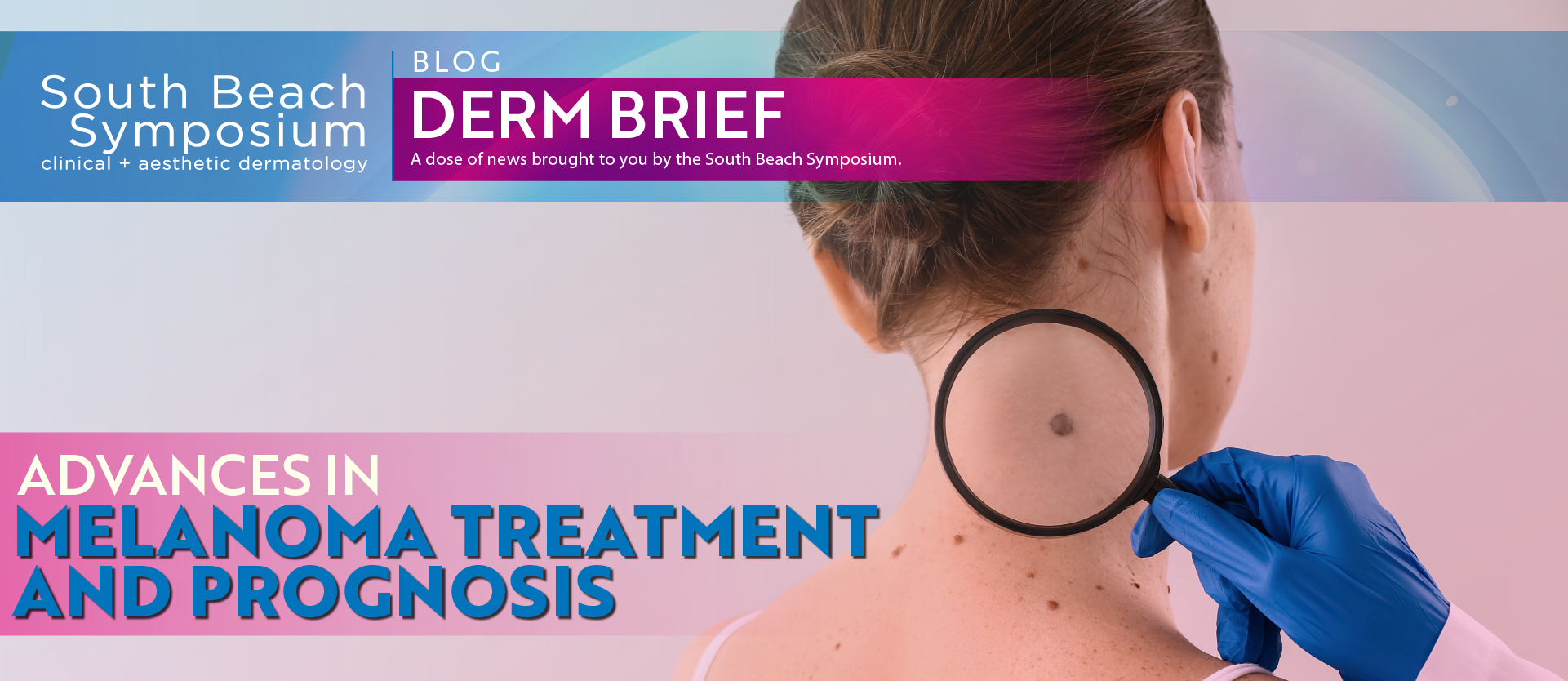The most dangerous type of skin cancer, melanoma, can be entirely curable if caught and treated early. However, once it has become metastatic, the average five-year survival rate drops down to between 15 and 20%. Previously, patients with a late stage melanoma diagnosis faced poor outcomes and very low survival rates.
A melanoma diagnosis used to be equivalent to a death sentence – with a median survival of less than a year – but now patients are living for many years with the help of new therapies and what has been deemed a “functional cure.” Incredible advances in skin cancer treatment allowed for by increased research efforts and technological innovations have greatly improved both the treatment methods and prognosis for melanoma patients. In the last twenty years, patients have experienced significant improvement in post-diagnosis outcomes, with higher survival rates and lifespans elongated by several years.
Developments in Melanoma Care
A combination of developments has contributed to the wide-ranging improvement in melanoma care. This has been made possible in part due to an enhanced “understanding of the immune system and the molecular biology of melanoma, and also its mutational profile,” director of Melanoma Medical Oncology at Mount Sinai, Philip Friedlander, MD, PhD told Medscape. Furthermore, he added that the industry greatly improved its ability to develop therapies that specifically target the immune system and mutated proteins involved in melanoma cancers.
As medical professionals expanded their knowledge of the cancer and the disease pathways, new therapies were developed, including immunotherapy with checkpoint inhibitors – ipilimumab (Yervoy), nivolumab (Opdivo), pembrolizumab (Keytruda) and other drugs. Novel targeted therapies aimed at BRAF and MEK mutations, such as vemurafenib (Zelboraf), and dabrafenib (Tafinlar) also stemmed from these advances.
Contributing to major developments in melanoma care, the new medications have been able to extend the lives of patients, limit recurrences, and provide a “functional cure” for the disease. Patients who have shown significant improvement in their condition as a result of these novel therapies are now living over 5 years with no evidence of melanoma. However, further research is needed to determine how to improve both the durability and the rate of such responses among patients as the extent of positive health outcomes remains unknown.
Declining Premature Death Rates
As a result of improved melanoma care, there has been a reduction of premature deaths related to the disease. Per data from the American Cancer Society’s most recent report, the average decline in melanoma-related premature mortality was about 5% from 2012 to 2016 – most notably within the African-American demographic with a decrease of 9%. Despite the positive implications of the reduction in premature mortality rates, many patients with advanced melanoma still do not respond to treatment methods.
Growing Treatment Options
While there were limited options for treatment in previous years – most of which were not efficacious and rarely cured the disease – the therapies available today are not universally successful. Before 2011, there were only two approved treatments for metastatic melanoma, including chemotherapy with dacarbazine and immunotherapy with high-dose interleukin 2 (HD IL-2). Neither therapy contributed to much improvement in elongating patient lifespan. While chemotherapy used to be the first line of treatment, now it is mostly a third-line therapy not frequently employed and not introduced to junior doctors. The use of dacarbazine, which was approved for metastatic melanoma in 1975, has a 5-20% response rate and no survival benefit, while HD IL-2 carries many cardiopulmonary side effects and has been found difficult to tolerate by patients.
Advances that led to improved treatment of advanced melanoma began with the Human Genome Project, which aided researchers in uncovering the pathogenesis of cancer through close investigation of human genetics. This led to the development of successful targeted therapies aimed at inhibiting genetic mutations involved in melanoma progression, such as vemurafenib approved by the FDA in 2011 for unresectable or metastatic melanoma with the BRAF-V600E mutation. Additional medications were later approved, including MEK inhibitors and combination therapies.
Further developments occurred in immunotherapy, which proved to be one of the more successful areas of treatment for melanoma. The emergence of immune checkpoint inhibitor drugs demonstrated overall survival improvement for the first time in 2010; previous experimental work was not as successful. In 2011, the first checkpoint inhibitor ipilimumab was approved for the treatment of melanoma. Studies revealed that several patients were still alive 10 years after treatment, while the drug led to an average three-year survival rate of 21-22%. Following the emergence of ipilimumab were novel therapies that blocked the programmed cell death – which contributed to higher response rates and lower rates of reported adverse effects.
Furthermore, an emphasis on combination therapies, which showed better results than singular drug therapy, improved melanoma care and patient health outcomes. Combination therapy – such as treatment with both nivolumab and ipilimumab – resulted in five-year survival rates of 52%, compared to 44% and 26% respectively when either drug was used alone. Progression-free survival at the five-year point revealed a clear benefit of combination therapy at 36%, compared with significantly lower rates for either drug alone. Future research efforts are required to compare the use of various combination therapies as currently there are no studies examining the different effects of medication combinations.
As a result of the incredible advances in melanoma treatment, experts now believe many patients can be cured with complete remission rates lasting for years after treatment. Although the notion of a cure may be premature, recent patient outcomes reveal the possibility of current therapeutic modalities to provide a so-called “functional cure.” Alongside concerns about the true efficacy and long-lasting nature of melanoma treatment, experts cite the importance of quality of life measures. Previous research emphasizes the impact of certain melanoma treatment methods, leading to greatly diminished quality of life in patients despite survival.
Despite these factors, the potential of a cure for melanoma patients is tangible and requires further investigation. Patients who have had metastatic melanoma or melanomas in the past should be encouraged to continue regular check-ups as the disease can recur in different areas of the body. As early detection is a vital element of successful treatment, it is important to regularly screen all patients for suspicious skin growths, lesions, and moles.
















